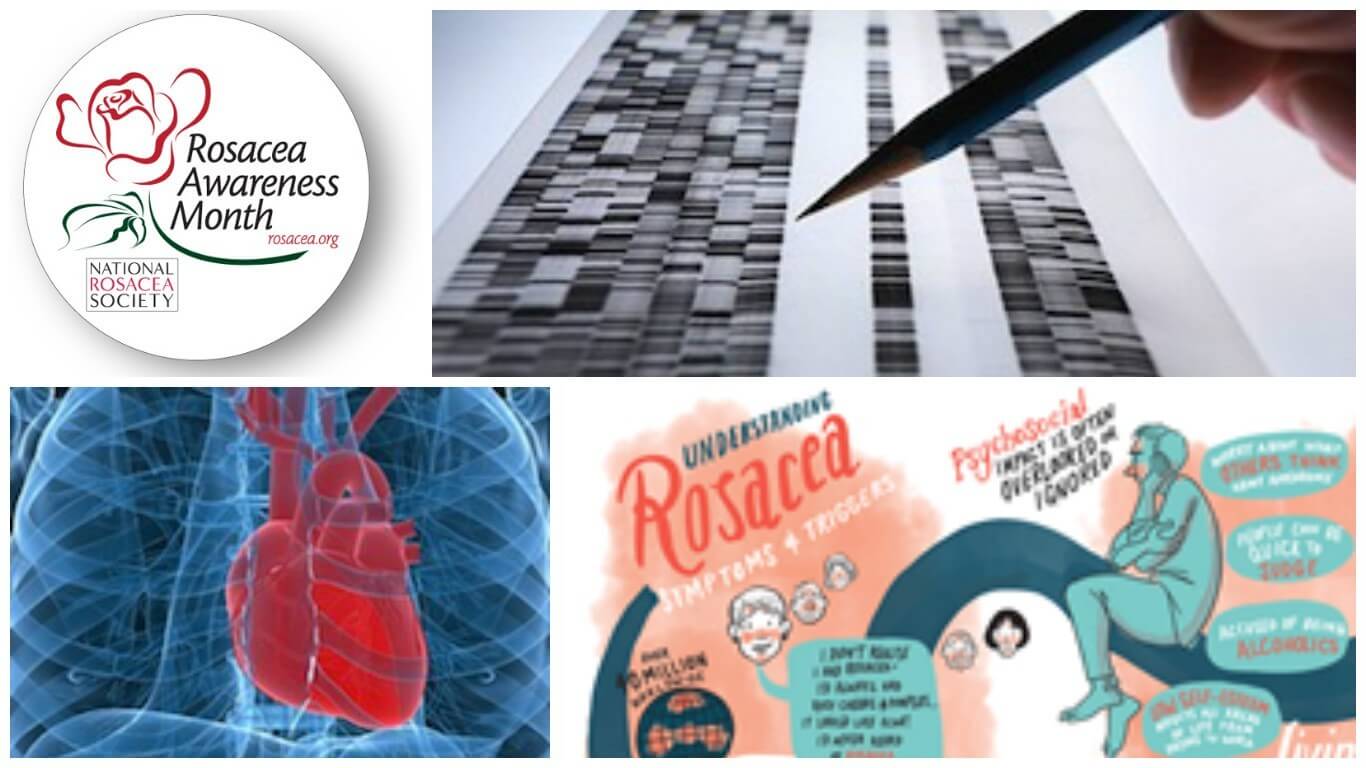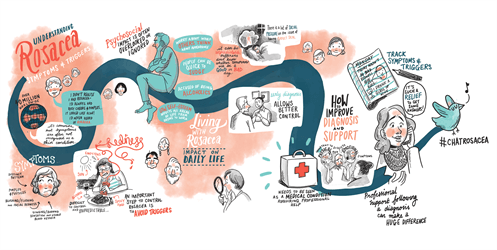From advances in rosacea research to global public awareness, 2015 was a banner year for rosacea. Here’s a look back:

Research Hits New Strides
- Demodex: The microsopic mites continued to come to the forefront as a potential factor in rosacea. This year, its role in the disease process came into sharper focus, with further understandings of the potential mechanism of action as well as new technology for further approaches in patient care.
- Genetics: The role of genetics has long been implicated in rosacea, and Dr. Anne Chang of Stanford University reported the results of an NRS-funded study that found genetic variants associated with the disease. In another NRS-funded study, Dr. Daniel Popkin of Case Western University found that genetics and environmental factors may contribute equally to the disorder.
- Sun Damage: The signs and symptoms of rosacea can sometimes mimic the signs of telangiectatic photoaging (TP) or sun damage. For the first time, a study funded by the NRS documented the clinical differences between the two disorders, aiding health professionals in appropriate diagnosis and treatment.
- Increased Risks: New medical research also pointed to significantly increased health risks associated with rosacea. An analysis of over 33,000 patients suggested a broader connection between rosacea and increased risk of cardiovascular disease, while another study showed that rosacea patients may have an increased risk of thyroid cancer and the skin cancer basal cell carcinoma. Similarly, another study found that rosacea patients may be more likely to suffer from other chronic issues such as allergies, asthma, gastrointestinal disease and diabetes.
- New Research Funding: In addition, the NRS was pleased to announce the funding of three new research grants to Dr. Gideon Smith at Harvard University, Dr. Lori Lee Stohl at Cornell University and Dr. Daniel Popkin at Case Western Reserve University.
Awareness Reaches New Heights
- Global Awareness: For 24 years, the NRS has been championing public awareness of rosacea in the United States, with its largest efforts focused during the longstanding Rosacea Awareness Month. In 2015, awareness went global with the premiere Global Rosacea Awareness Month. Doctors, patients and rosacea experts from Europe, Australia, Latin America, Canada and the U.S. joined a Twitter tweetathon to answer questions about symptoms and triggers, impact on daily life and ways to improve diagnosis and support with the hashtag #ChatRosacea. Responses were later captured in an illustration highlighting the impact of rosacea on daily life:

- Consumer Campaign: The NRS also participated in “Break Up With Your Makeup,” a national campaign aimed to educate patients across the country about the signs and symptoms of rosacea and empower them to feel as confident as possible about their skin. Patients were challenged to submit a no-makeup selfie on Instagram with a 100-word story for the chance to win a trip to the 2015 New York Film Festival. More than 300 patients from across the country entered their submission with more than 9,000 votes tracked.
The NRS is Growing
- Website Expansion: Rosacea.org continues to grow as the leading online resource for information on rosacea. This year, the NRS launched several new additions to its website, including a patient page on When to see a Doctor, a section focused on the potential Causes of Rosacea, and The Ecology of Your Face, which explores the human microbiome’s relationship to rosacea. In addition, an updated Treatment Algorithm page is now available to better assists health professionals in diagnosing and treating the disorder.
Today researchers are closer than ever to understanding the physical causes of rosacea, which may lead to significant advances in its treatement, prevention and potential cure. In 2016, the NRS looks forward to continuing to raise awareness of rosacea and supporting medical research while serving the more than 16 million Americans estimated to suffer from this often life-disruptive disorder.
Thank you!

To help the NRS continue to fund important research into this common and often devastating disorder, please consider making a tax-deductible donation. Simply donate online, or send a check to the National Rosacea Society, 111 Lions Dr., Ste. 216, Barrington, IL 60010.